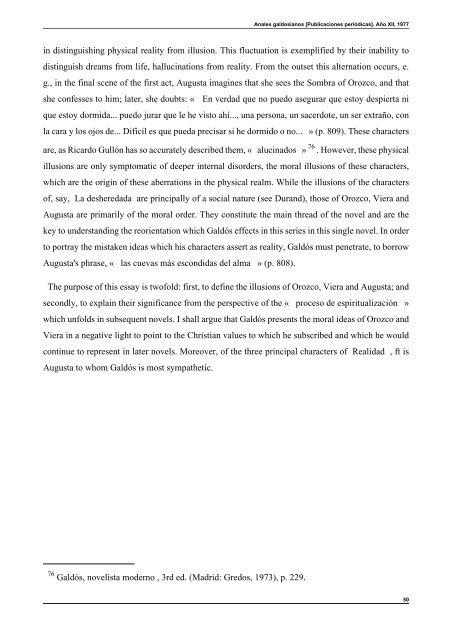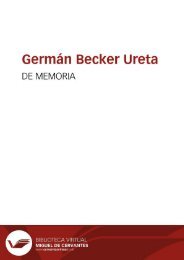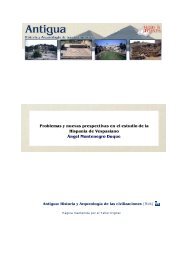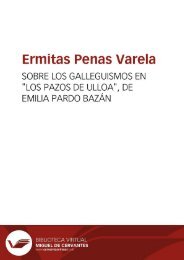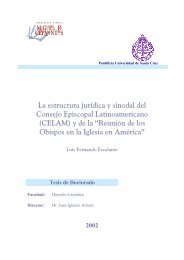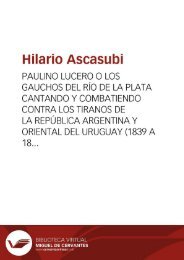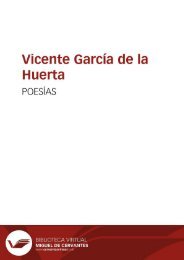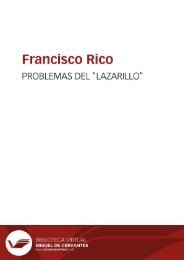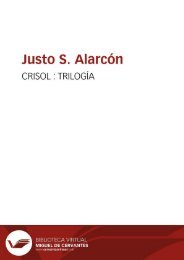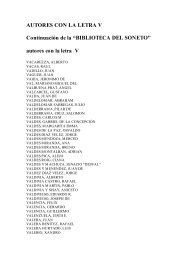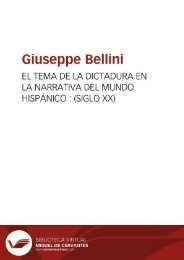Create successful ePaper yourself
Turn your PDF publications into a flip-book with our unique Google optimized e-Paper software.
Anales galdosianos [Publicaciones periódicas]. Año XII, 1977<br />
in distinguishing physical reality from illusion. This fluctuation is exemplified by their inability to<br />
distinguish dreams from life, hallucinations from reality. From the outset this alternation occurs, e.<br />
g., in the final scene of the first act, Augusta imagines that she sees the Sombra of Orozco, and that<br />
she confesses to him; later, she doubts: « En verdad que no puedo asegurar que estoy despierta ni<br />
que estoy dormida... puedo jurar que le he visto ahí..., una persona, un sacerdote, un ser extraño, con<br />
la cara y los ojos de... Difícil es que pueda precisar si he dormido o no... » (p. 809). These characters<br />
are, as Ricardo Gullón has so accurately described them, « alucinados » 76 . However, these physical<br />
illusions are only symptomatic of deeper internal disorders, the moral illusions of these characters,<br />
which are the origin of these aberrations in the physical realm. While the illusions of the characters<br />
of, say, La desheredada are principally of a social nature (see Durand), those of Orozco, Viera and<br />
Augusta are primarily of the moral order. They constitute the main thread of the novel and are the<br />
key to understanding the reorientation which <strong>Galdós</strong> effects in this series in this single novel. In order<br />
to portray the mistaken ideas which his characters assert as reality, <strong>Galdós</strong> must penetrate, to borrow<br />
Augusta's phrase, « las cuevas más escondidas del alma » (p. 808).<br />
The purpose of this essay is twofold: first, to define the illusions of Orozco, Viera and Augusta; and<br />
secondly, to explain their significance from the perspective of the « proceso de espiritualización »<br />
which unfolds in subsequent novels. I shall argue that <strong>Galdós</strong> presents the moral ideas of Orozco and<br />
Viera in a negative light to point to the Christian values to which he subscribed and which he would<br />
continue to represent in later novels. Moreover, of the three principal characters of Realidad , ft is<br />
Augusta to whom <strong>Galdós</strong> is most sympathetic.<br />
76 <strong>Galdós</strong>, novelista moderno , 3rd ed. (Madrid: Gredos, 1973), p. 229.<br />
50


